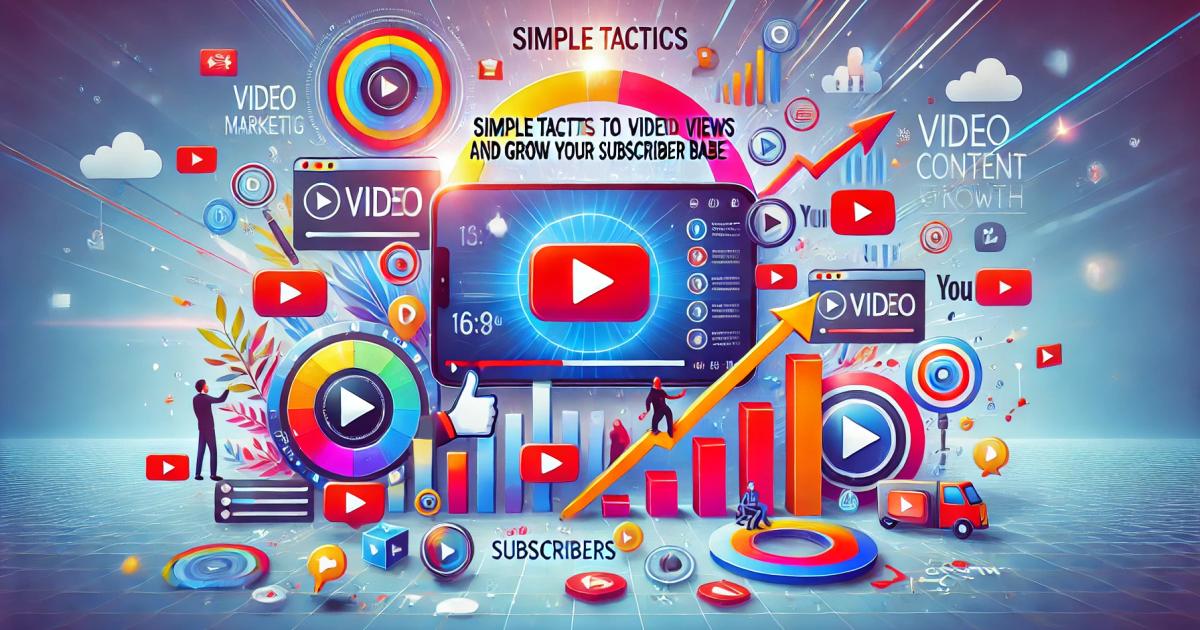Simple Tactics to Boost Video Views and Grow Your Subscriber Base
From SEO and AI answer engines to newsletters and social media, this guide breaks down simple tactics to drive traffic to website-hosted video. See how publishers are winning with on-site video, building subscriber lists, and compounding traffic through an owned-and-operated flywheel.

Simple Tactics to Boost Video Views and Grow Your Subscriber Base
Table of Contents
1. Why Website-Hosted Video is a Game-Changer
Let’s be blunt: YouTube isn’t a traffic partner, it’s a siphon. Yes, it can generate views with the prospect of virality, but those views and subscribers belong to YouTube. They own the page, the ads, the subscribers, and the recommendation engine.
With videos hosted on a website, like the Open.Video platform, the rules flip. Your video lives on your own site, under your brand. That means:
Even neutral platforms like Vimeo or Dailymotion prove that hosting video outside YouTube is possible. But the real benefit comes when your video technology provides SEO friendly “Watch Pages” hosted directly under your domain - whether through Open.Video or another owned-and-operated setup.
But here’s the catch: publishing video on your site isn’t enough. You need a traffic engine. Let’s break it down.
2. SEO: Making Your Video Discoverable on Google
If you think Google search is just for blogs and product pages, think again. Video is exploding in search results.
Here’s how to win:
Case in point: A regional cooking publisher leveraged Open.Video’s platform to automatically create Watch Pages while also embedding recipe videos directly into their blog posts. Within 90 days, organic traffic to those pages doubled - Google began showing their video snippets above competing recipe blogs that relied only on text or YouTube.
3. AI Answer Engines: The Next Battleground for Video Visibility
We’re entering the age of AI answers—Google’s AI Overviews, Perplexity, ChatGPT, and Grok. These engines pull source material to generate responses. If your video is on your own website and structured properly, it becomes fair game for citation and traffic.
Tips for getting picked up:
Example: A DIY publisher started structuring video titles as literal questions (“How do you replace a bathroom faucet?”). Not only did they show up in Google search results, they’ve already been cited in Perplexity’s answers - driving fresh referral traffic that wouldn’t exist a year ago.
4. Newsletters: Your Direct Line to Loyal Viewers
Every algorithm shift, every platform change, every “shadow ban” - there’s one guaranteed defense: owning your audience list.
Newsletters are where video publishers can win big:
Case study: A fitness publisher launched a newsletter called “Workout Wednesdays.” Each edition featured one new training video on their site plus quick tips. After six months, 40% of site traffic was directly driven by newsletter clicks to videos - and those visitors had the highest session times across all content.
5. Social Media: Distribution Without Dependency
Social media still matters. But the goal isn’t to “go viral” - it’s to drive viewers back to your site (ok, maybe it can be both).
Publisher example: A niche sports media outlet posts 30-second game highlight reels on X. The tweets consistently rack up 100K+ views, but the real win? Their pinned links drive thousands of fans to full-length commentary videos hosted on their own site where they monetize with ads and subscriptions.
6. Case Studies: Publishers Winning with On-Site Video
These aren’t hypotheticals, they’re the early signals that owned video compounds value in a way platforms never will.
7. The Owned-and-Operated Flywheel
Here’s the bigger picture:
That’s the flywheel. It spins for you, not for a platform.
Key Takeaway: Hosting video on your own site is no longer a nice-to-have—it’s the unlock for growth, ownership, and monetization. The audience is out there. The question is: will they land on your site, or someone else’s?
About Jeff Bernard
Jeff Bernard brings a wealth of experience in curating innovative digital strategies that drive user acquisition, engagement, and ultimately, digital revenue growth. He currently serves as VP of Content Partnerships at Open.Video, where he helps creators break free from walled gardens and take ownership of their content on the open web. Jeff also leads as the VP of Global Publisher Success at Ezoic, a recognized leader in the digital advertising space. He holds an M.B.A. from the University of Redlands and a B.A. in Communication from California State University San Marcos. Outside of work, Jeff enjoys life with his wife and two boys - often found coaching youth soccer or battling it out on the tennis court.
